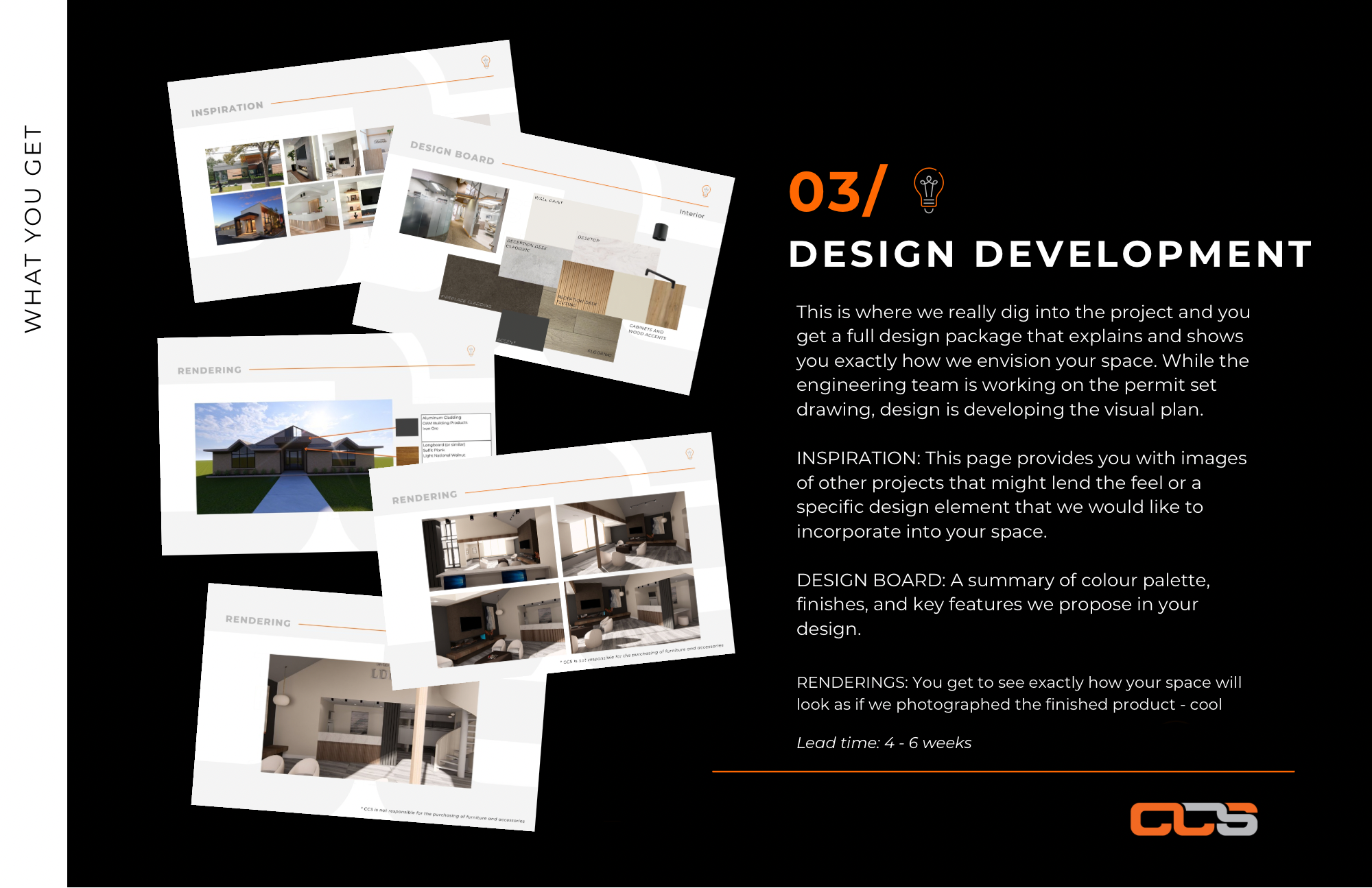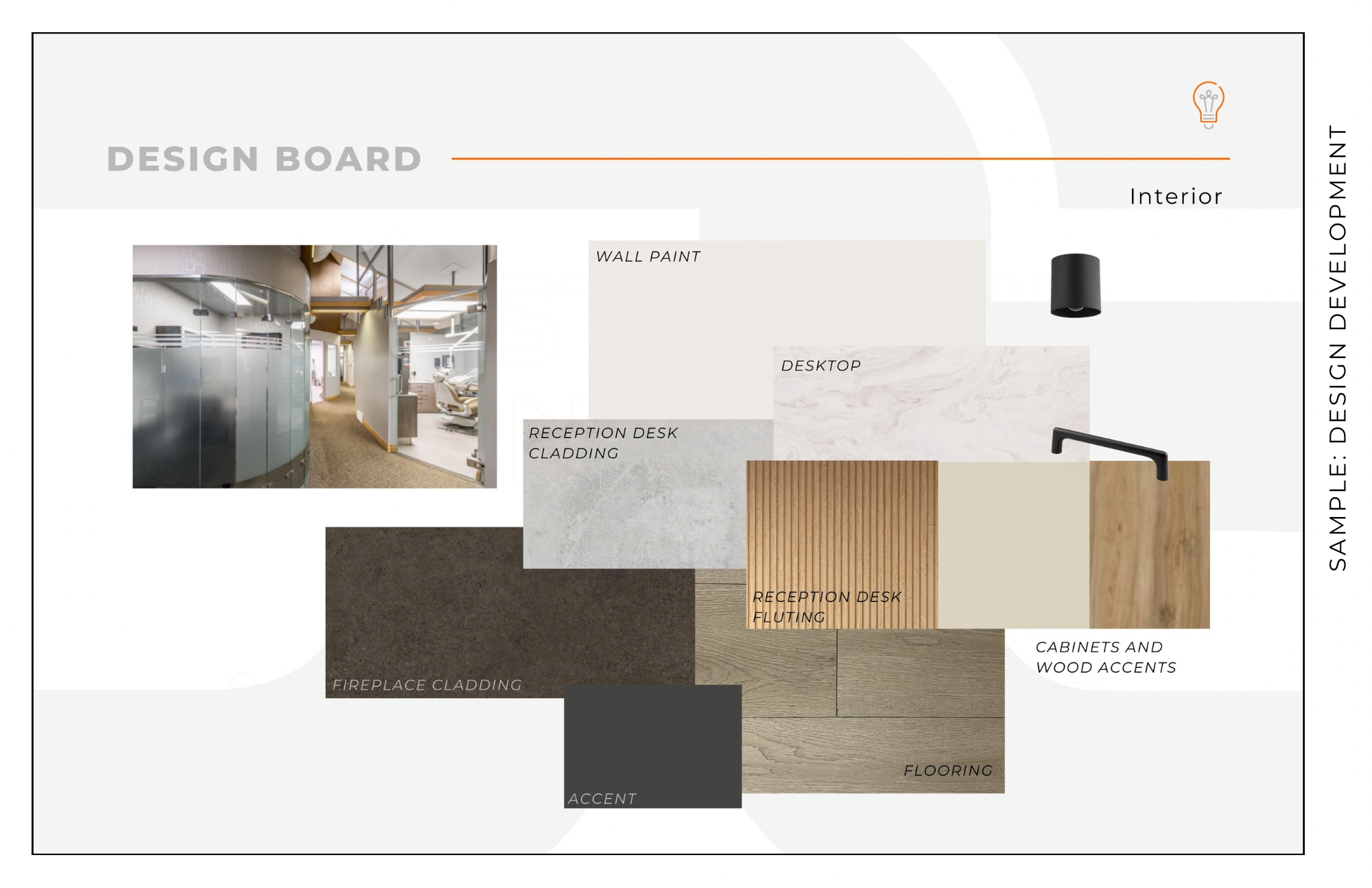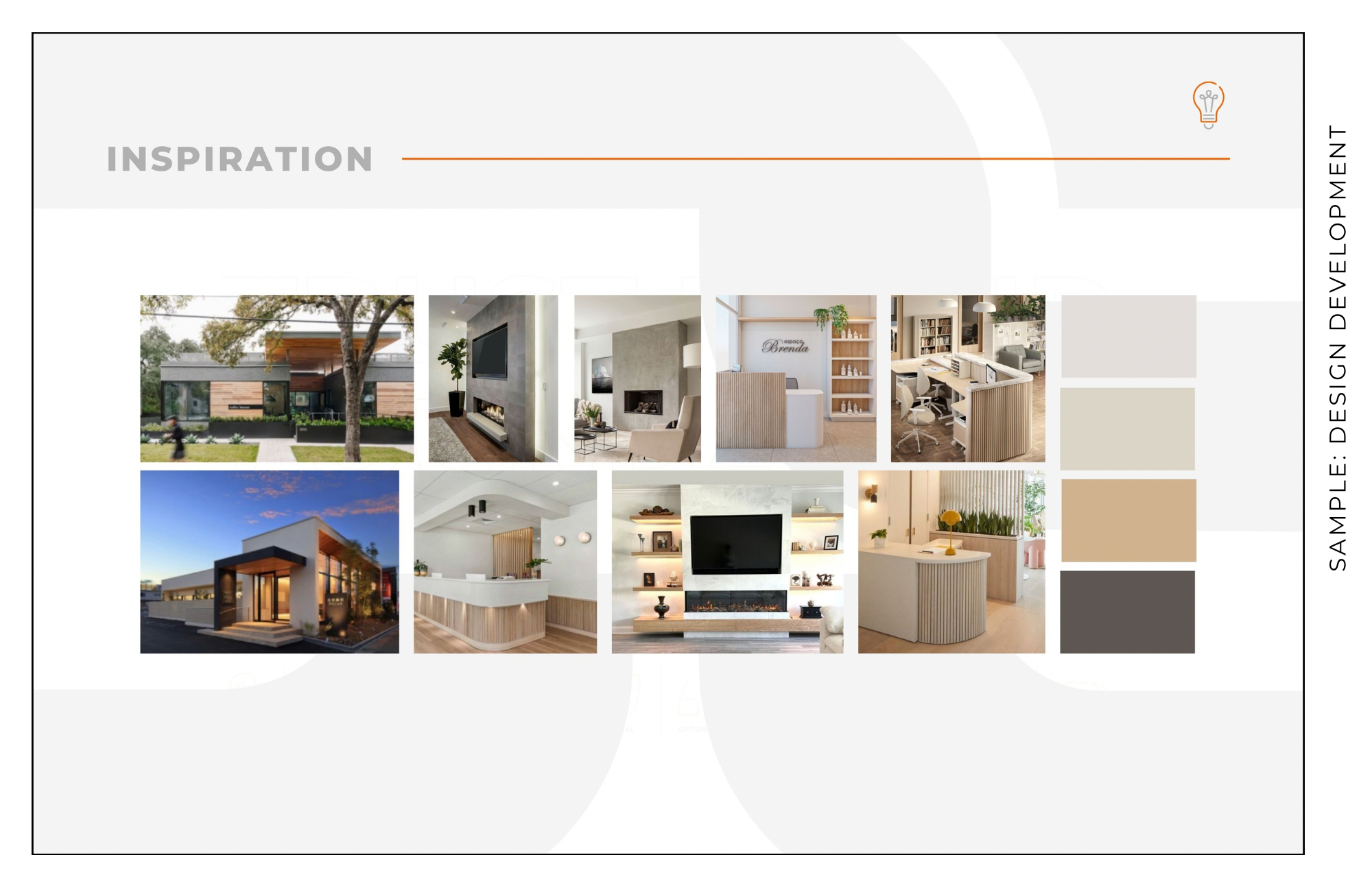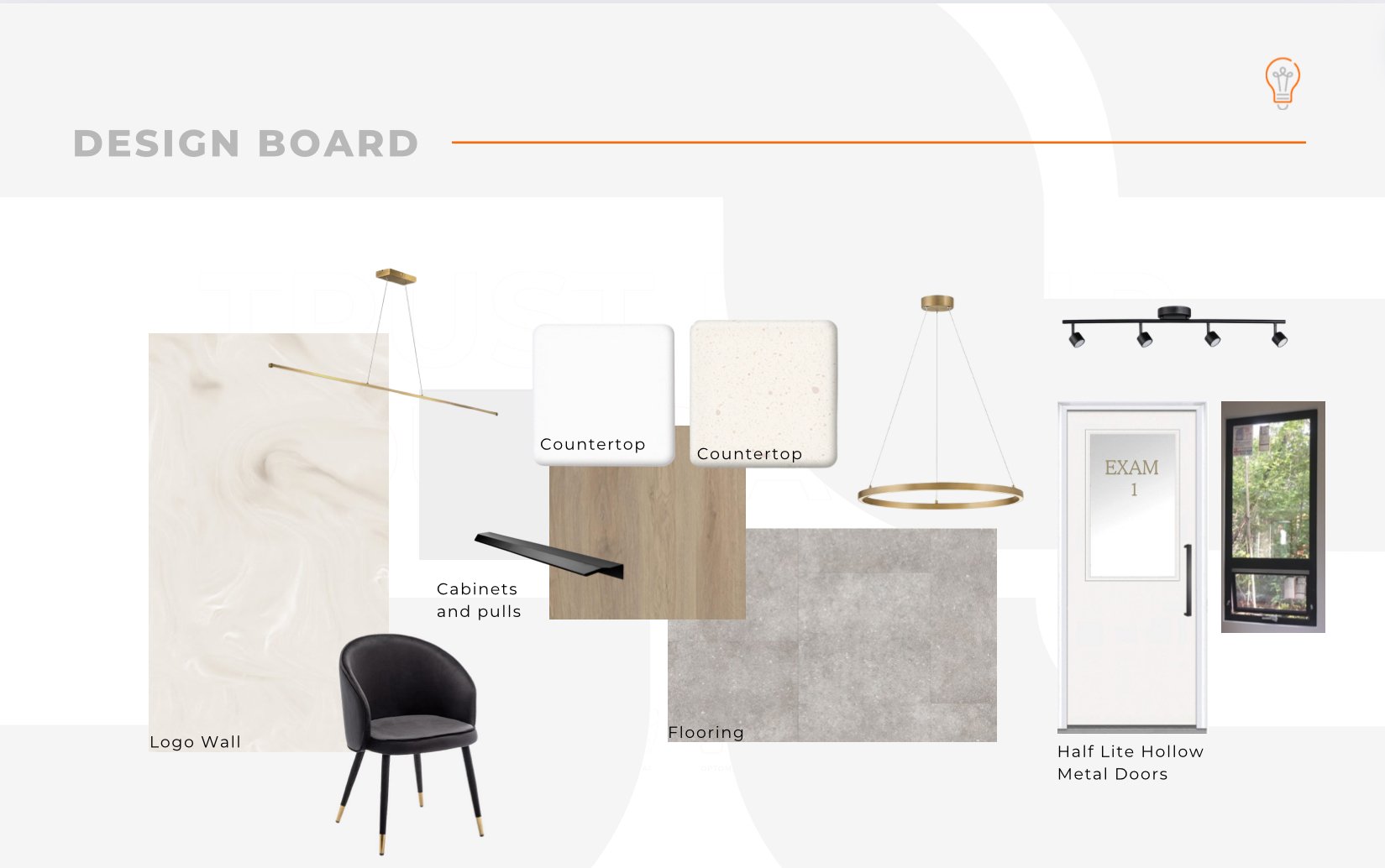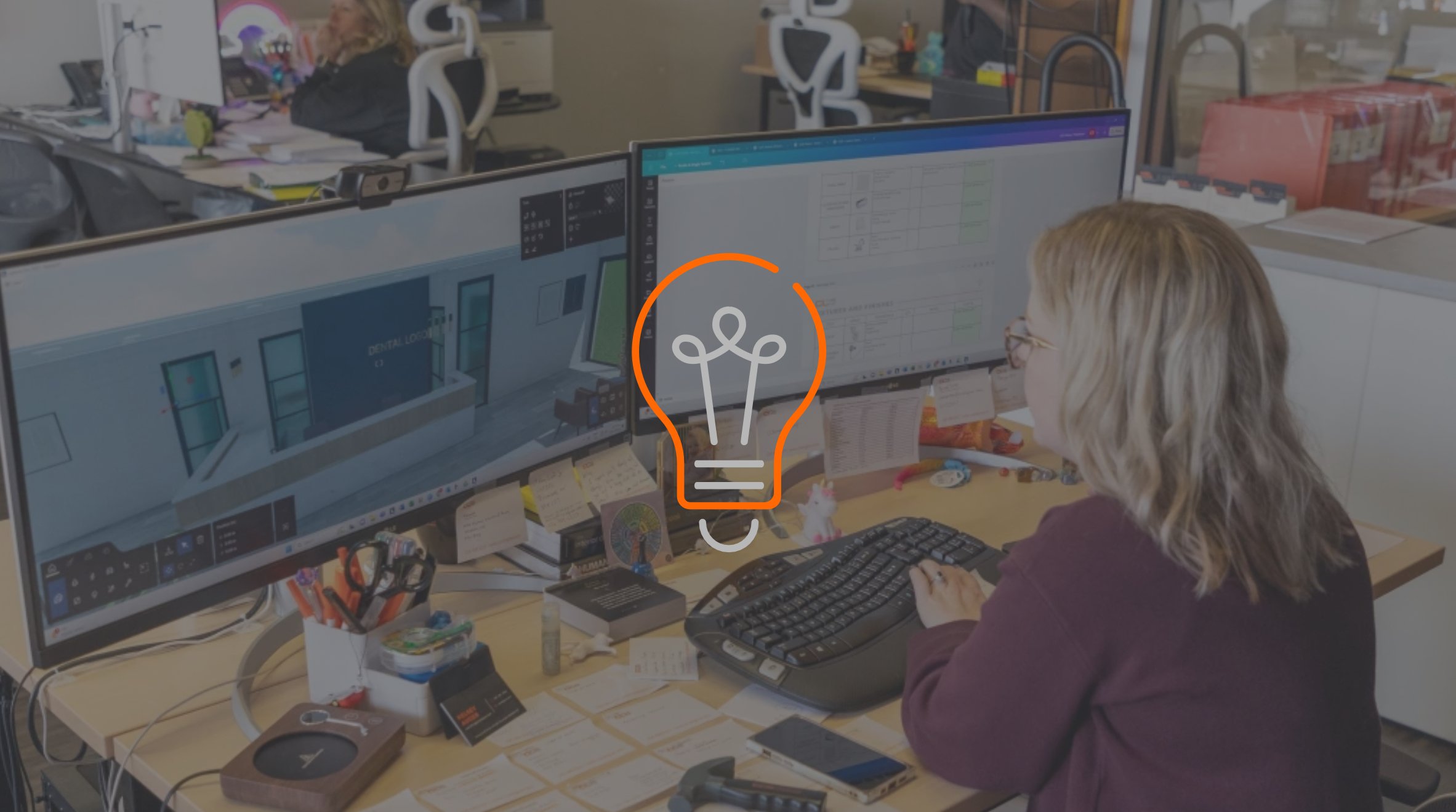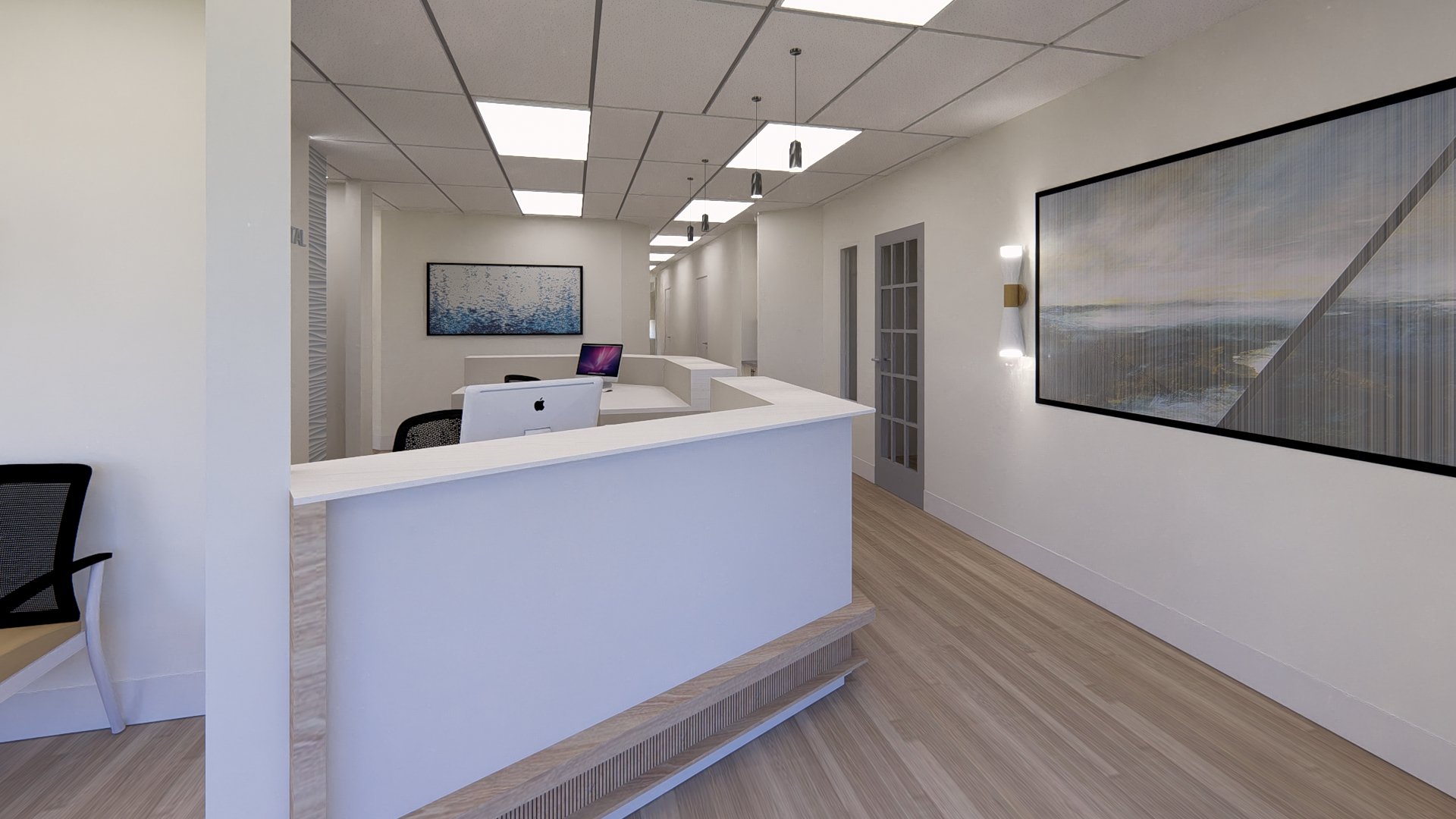Interior Design Process: Phase 2
Mastering Design Development for a Cohesive Vision
The design development phase is a crucial stage in the interior design process, transforming initial concepts into detailed plans. This phase bridges the gap between the initial idea and the final execution, ensuring that every element aligns with the client’s vision. Let’s delve into the key concepts of design development and understanding its importance when it comes to designing for dental offices and other medical clinics.
Understanding Design Development
The design development phase takes the initial concepts and ideas from the preliminary layout plans and refines them into detailed plans and specifications. Design development bridges the gap between conceptualization and implementation, providing a clear and actionable roadmap for the project.
Key Components of Design Development
Inspiration
Gathering inspiration is the first step in the design development phase. This involves researching and collecting images, materials, and ideas that resonate with the project theme and objectives. Inspiration can come from various sources such as nature, architecture, fashion, and art, but mostly we gather interior photos that include elements we would like to utilize in our design such as an example of a texture, colour, or other design element.
2. Design Board
A design board, also known as a mood board, is a curated collection of images, colours, textures, and materials that represent the look and feel of the design. It serves as a visual reference that guides the design process and ensures consistency in style. A well-curated design board helps communicate the designer’s vision to clients and stakeholders.
3. Renderings
Renderings are detailed, realistic visual representations of the design. These can be hand-drawn or computer generated, and they provide a clear picture of how the final space will look. Renderings help in refining the design, making necessary adjustments, and gaining client approval before moving forward with implementation.
Sketchup
We start our renderings by building out a 3D model of the floorplan in Sketchup. This is a great program to use as you have a lot of control over customization.
Lumion
Lumion is a rendering program that can connect to Sketchup. We import our 3D model into Lumion, where we add lighting and other finishing touches to make the final rendering as realistic as possible. We export specific views in the model to get the full vision across to the client. We also provide a video walkthrough of the space for an even better feel of their new office.
4. Canva
Once the design elements are finalized, it’s essential to compile them into a cohesive presentation package. Tools like Canva offer user-friendly templates and design tools to create professional presentations. The presentation package includes our inspiration board, design board, renderings, and any other relevant details and notes that we would be helping in getting our vision across to our client. This comprehensive package helps in effectively communicating the design concept to clients and stakeholders, ensuring everyone is on the same page and makes it easy to get approval to move forward in the design process.
The Importance of Design Development
1. Clarity and Direction
Just like the preliminary layout, the design development provides a clear direction for the project. It ensures that the design concept is well thought out and all elements are harmoniously integrated. This clarity helps in avoiding misunderstandings and miscommunications later in the project.
2. Client Approval
This phase allows for detailed presentations and discussions with the client, ensuring their vision is accurately captured. Client feedback is crucial at this stage to make any necessary adjustments before finalizing the design.
3. Efficient Execution
A well-developed design plan facilitates smoother execution. Detailed renderings and a comprehensive presentation package guide contractors and vendors, minimize errors and delays during the implementation phase
4. Budget Management
Design development helps in creating a realistic budget by identifying all design elements and their costs. This phase allows adjustments to ensure the project stays on budget while achieving the desired outcome.
Conclusion
The design development phase is a vital step in the interior design process, transforming abstract ideas and concrete plans. By focusing on inspiration, design boards, renderings, and effective presentations, we create cohesive and compelling designs that align with thee client’s vision and ensure successful project execution.
Learn more about design services and how you can work with me over at CCS!
What’s next?
If you loved this post, you probably enjoy these as well…


